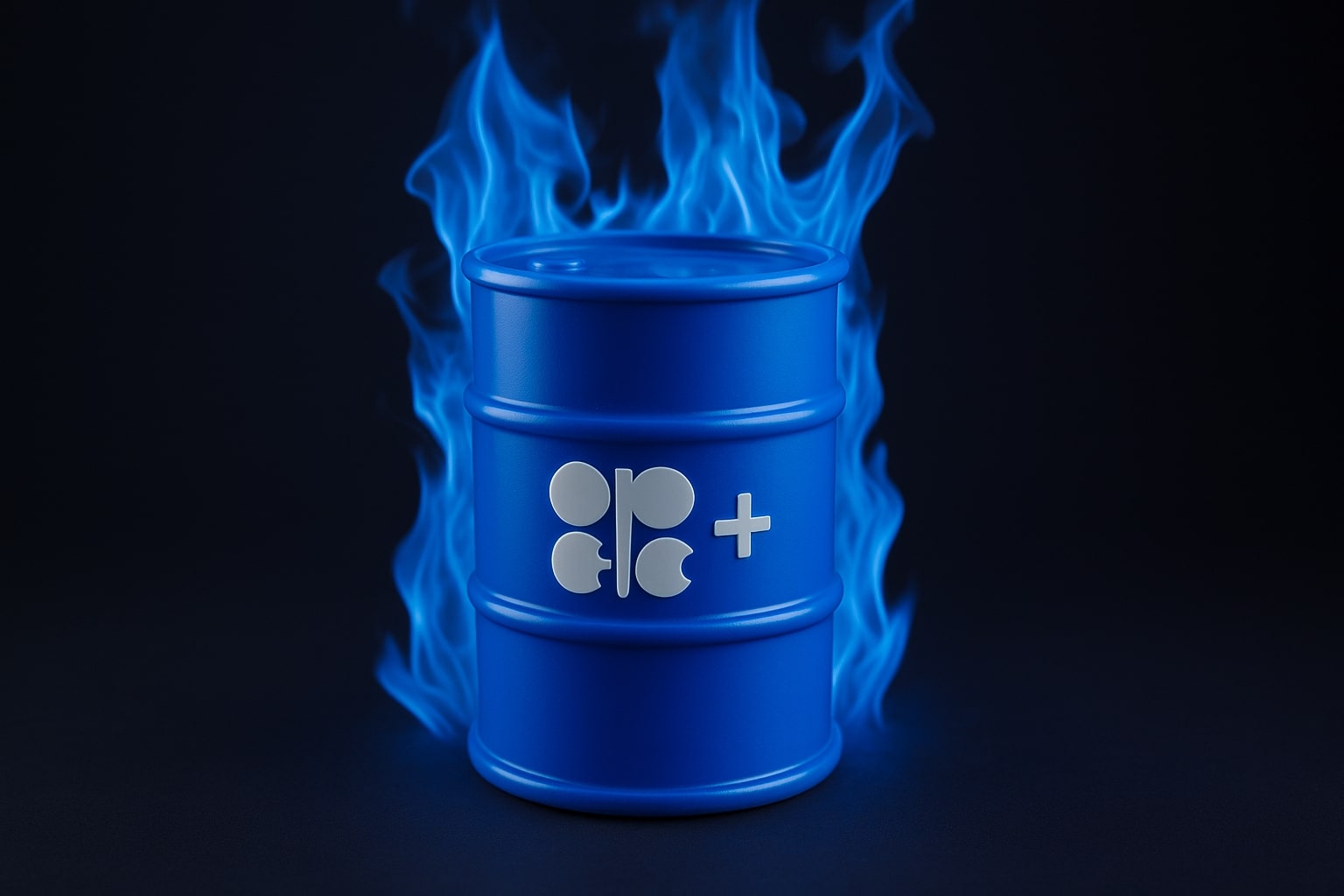
Oil Price Forecast - WTI at $63 and Brent Near $67 as Israel Strike and OPEC+ Decisions Jolt Market
Geopolitical escalation, Saudi pricing cuts, and supply overhang warnings drive crude volatility amid fragile demand | That's TradingNEWS
WTI (CL=F) and Brent (BZ=F) Prices Surge on Geopolitical Shock and OPEC+ Uncertainty
Oil prices are once again reflecting the weight of geopolitics and supply-side maneuvering. WTI crude (CL=F) climbed to $63.11 per barrel, up 1.37%, while Brent (BZ=F) added 1.32% to $66.89 after Israel carried out an unprecedented strike in Doha, Qatar. The location of the strike rattled traders because Qatar is a cornerstone of the global energy network, home to one of the largest U.S. military bases, and a critical LNG exporter. Even though Qatar does not export large volumes of crude, the geopolitical symbolism triggered immediate risk premiums across energy benchmarks.
Geopolitical Escalation Drives Risk Premiums
The Israel–Qatar escalation shifted the balance of oil markets that were already contending with fragile supply outlooks. Nearly every Gulf state plays an outsized role in energy stability, and the possibility of escalation spilling into wider conflicts pushed risk hedging into oil futures. Historically, events in the Gulf region have added anywhere from $3–$7 per barrel in geopolitical premium, and traders are preparing for that scenario again.
OPEC+ Output Strategy and Saudi Pricing Tactics
Overlaying the geopolitical spike is the ongoing OPEC+ supply policy. After signaling a potential collective increase of 550,000 barrels per day for October, the group delivered just 137,000 barrels per day, managing expectations but still loosening cuts. Saudi Aramco responded by cutting its official selling price for October Asian deliveries by $1 per barrel, with Arab Light now set at a $2.20 premium over Oman/Dubai. The cut was larger than expected and highlights Riyadh’s concern about weakening Asian demand. With China’s oil stockpiling continuing but EV adoption suppressing gasoline demand growth, Saudi Arabia appears willing to trade price for market share.
Bearish Voices Emerge Amid Supply Overhang Concerns
Shipping executives, including Maersk’s oil trading head, warned at the Asia Pacific Petroleum Conference that risks lean to the downside, citing sluggish demand and excess supply from Russia and U.S. shale. Goldman Sachs flagged the possibility of a 1.9 million barrel per day surplus next year, which could drag Brent crude back to $55 per barrel. S&P Global echoed the warning, noting that OECD inventories remain 100 million barrels below the five-year average, but contango structures could widen quickly if stockbuilding accelerates.
Refinery Disruptions and Regional Supply Shocks
Complicating the balance are disruptions in Russia and Nigeria. Ukrainian drones have hit Rosneft’s key refineries, temporarily halting processing and reducing export-ready volumes. In Nigeria, unions have called for strikes at the 650,000 bpd Dangote refinery over labor disputes, threatening near-term regional fuel supply. These interruptions, although episodic, inject additional volatility into physical markets already rattled by OPEC+ decisions and Middle Eastern risks.
WTI and Brent Technical Structure
Technically, WTI crude (CL=F) is testing a double-bottom pattern near $62, with resistance layers stacking at $65 and $66. A decisive break above $66 would target $67.50–$68.00, while failure to hold $62 could drag prices toward $60. Brent (BZ=F) is moving in a similar structure, with a range defined by $65 support and $70 resistance. Both contracts are holding above immediate support levels, but momentum remains fragile, with short-covering responsible for much of the recent bounce.
Macro Backdrop and Currency Linkages
U.S. nonfarm payroll revisions, which revealed a loss of 911,000 jobs, reinforced expectations of a September Fed rate cut, sending the dollar lower and boosting commodities priced in USD. At the same time, gold surged past $3,674 per ounce, underscoring the search for havens during geopolitical stress. Oil benefitted in the short term, but the fundamental drag from weak macro data means demand forecasts may not justify sustained rallies.
Read More
-
UCO ETF Price Forecast: Can NYSEARCA:UCO at $18.57 Ride a 2026 Oil Squeeze?
18.12.2025 · TradingNEWS ArchiveStocks
-
XRPI at $10.50 and XRPR at $14.93 Hit XRP ETF Lows While XRP-USD Holds $1.84 After 30 Days of Inflows
18.12.2025 · TradingNEWS ArchiveCrypto
-
Natural Gas Price Forecast: Henry Hub Holds Around $4 as EIA Draw Hits 167 Bcf
18.12.2025 · TradingNEWS ArchiveCommodities
-
USD/JPY Price Forecast: Pair Holds Above 155 As BoJ And US CPI Set Up A Major Break
18.12.2025 · TradingNEWS ArchiveForex
China and India as Swing Buyers
China continues to stockpile crude aggressively, lifting imports since March, but the move is less about demand recovery and more about building reserves. Analysts warn Chinese demand growth could peak by 2027, with EV adoption already displacing 580,000 barrels per day of gasoline equivalent this year. India, meanwhile, is doubling down on discounted Russian barrels, defying Western pressure, and securing long-term supply contracts. These divergent strategies illustrate Asia’s outsized role in setting marginal demand, but also point to limits on upside for Brent as peak demand debates accelerate.
Verdict on Oil (CL=F, BZ=F)
Oil prices are being propped up by geopolitics rather than fundamentals. With WTI at $63.11 and Brent at $66.89, near-term rallies hinge on whether the Israel–Qatar escalation deepens or whether OPEC+ signals further restraint. Structural risks remain to the downside, with forecasts of Brent sliding back toward $55 if oversupply accelerates into 2026. The verdict for now is Hold, as short-term geopolitical premiums keep oil elevated, but long-term risk-reward tilts bearish unless demand outpaces the looming wave of supply from OPEC+, U.S. shale, and LNG expansions.



















